|
ANDREA MANTEGNA - TRIUMPH OF THE VIRTUES
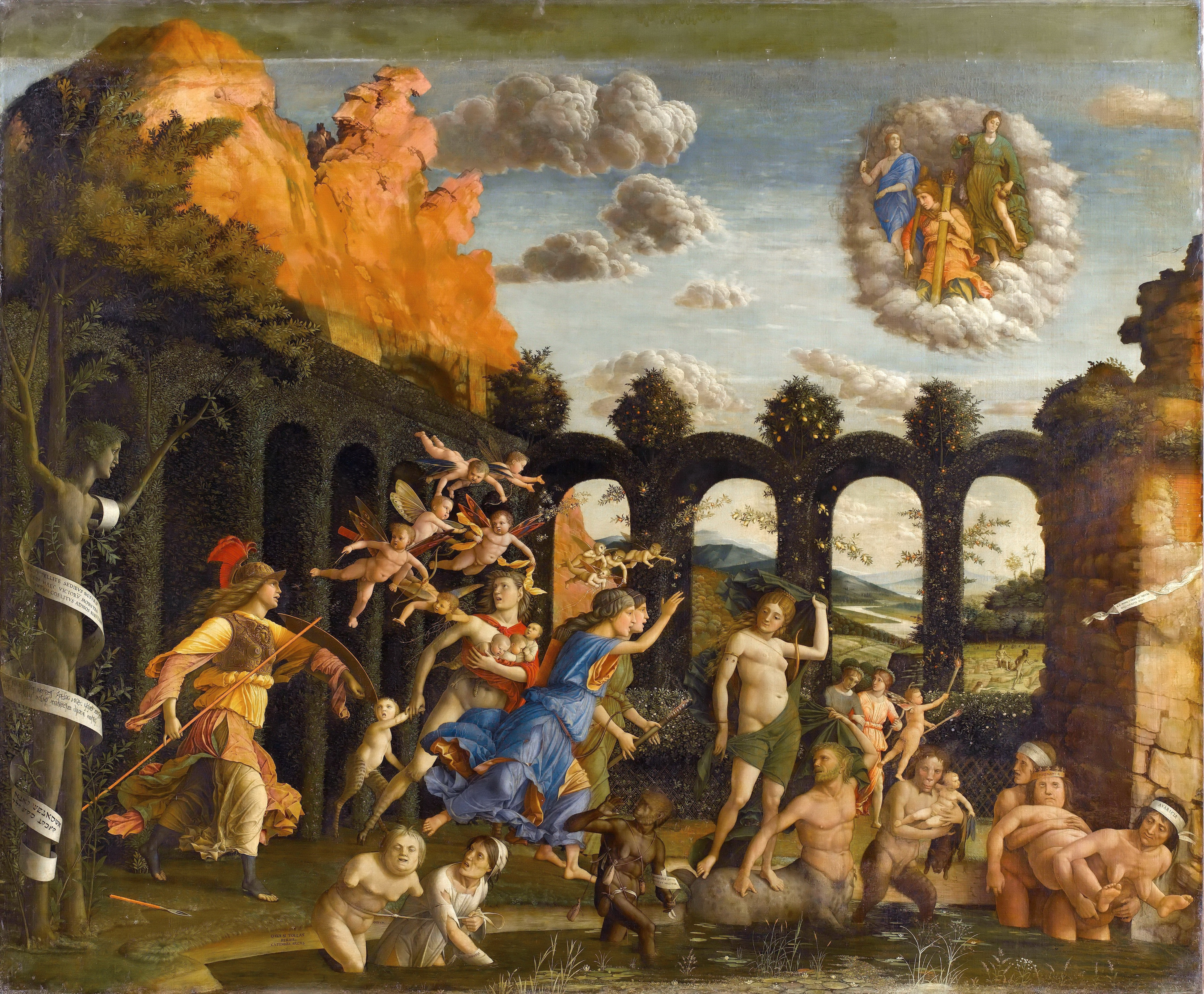
Andrea Mantegna,
Public domain, via
Wikimedia Commons
1502 |
- The Triumph of the Virtues is also known as
Minerva Expelling the Vices from the Garden of Virtue.
- Tempera on canvas.
- High Renaissance
and resides at the Musée du Louvre of Paris.
- The triumph was the second
in a series painted by Mantegna for Isabella d'Este's studiolo (cabinet), after the
Parnassus in 1497.
-
By 1502, Mantegna had completed the second painting but he
struggled with the moralizing allegories then in fashion that
Isabella preferred because he had a more austere and architectual style.
|
Despite his efforts, Isabella seemed to prefer the tender and sentimental work of Perugino and the Ferrara native Lorenzo Costa, who arrived in Mantua in 1506 to succeed Mantegna as court painter. (travelingintuscany.com)
|
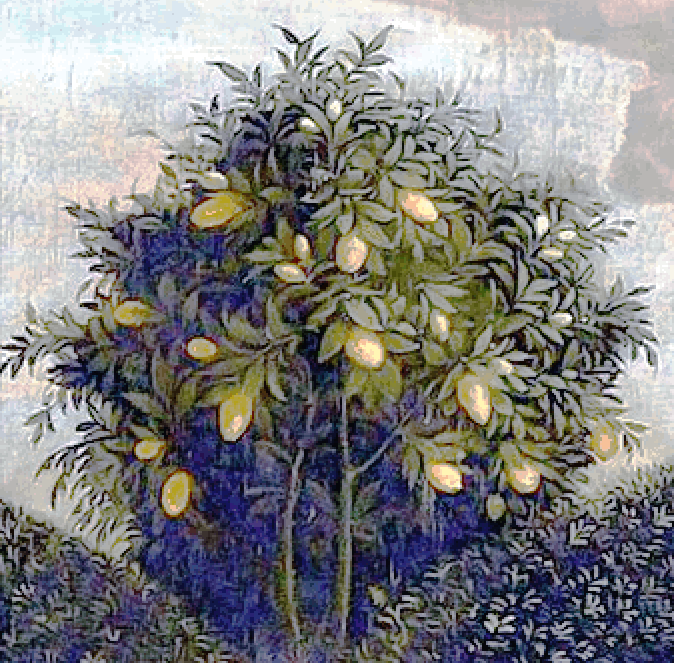
Garden |
- The painting reflects the values and ideals of the Italian Renaissance, particularly the emphasis on humanism and the importance of morality.
- Epitomizes the triumph of moral excellence over vice and corruption.
|
The meticulous detail of the tempera medium captures the intricacies of individual leaves and branches, creating a rich tapestry of earthy tones. The figure’s expression conveys a sense of strength and resolve, embodying the allegorical theme of virtue’s triumph. (artchive.com)
|
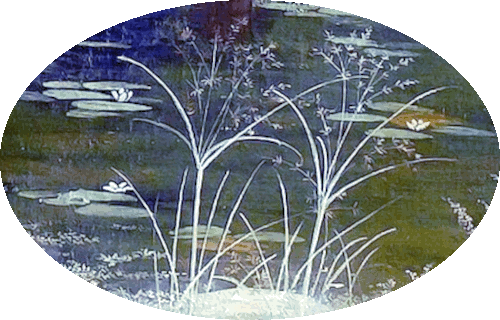
Marsh |
- The scene shows a low leveled piece of land, with
marshes surrounded by a tall, grass covered arch and ruled over by the vices.
|
Mantegna was influenced by fellow Italian artists Filippo Lippi, Paolo Uccello, and, most significantly, Donatello, who worked in Padua for a period, which allowed Mantegna to see the master sculptor’s work in person. (artsy.net)
|
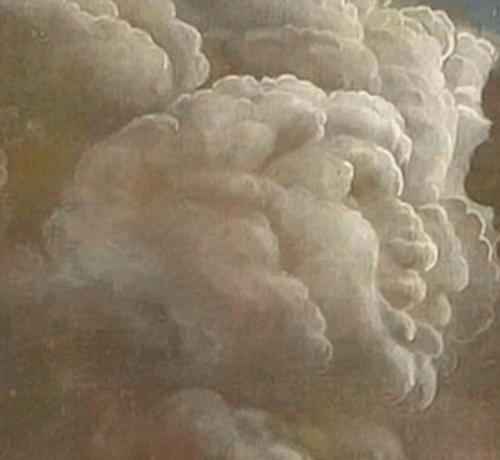
Clouds with faces |
- The painting is rich in symbolism and detail, including clouds with faces.
- Are they trying to blow the virtues away.
|
The Parnassus and Minerva were painted by Mantegna to be placed opposite each other, as demonstrated by the fact that the light comes from the left in the first painting and from the right in the second. (mini-site.louvre.fr)
|
|
Minerva |
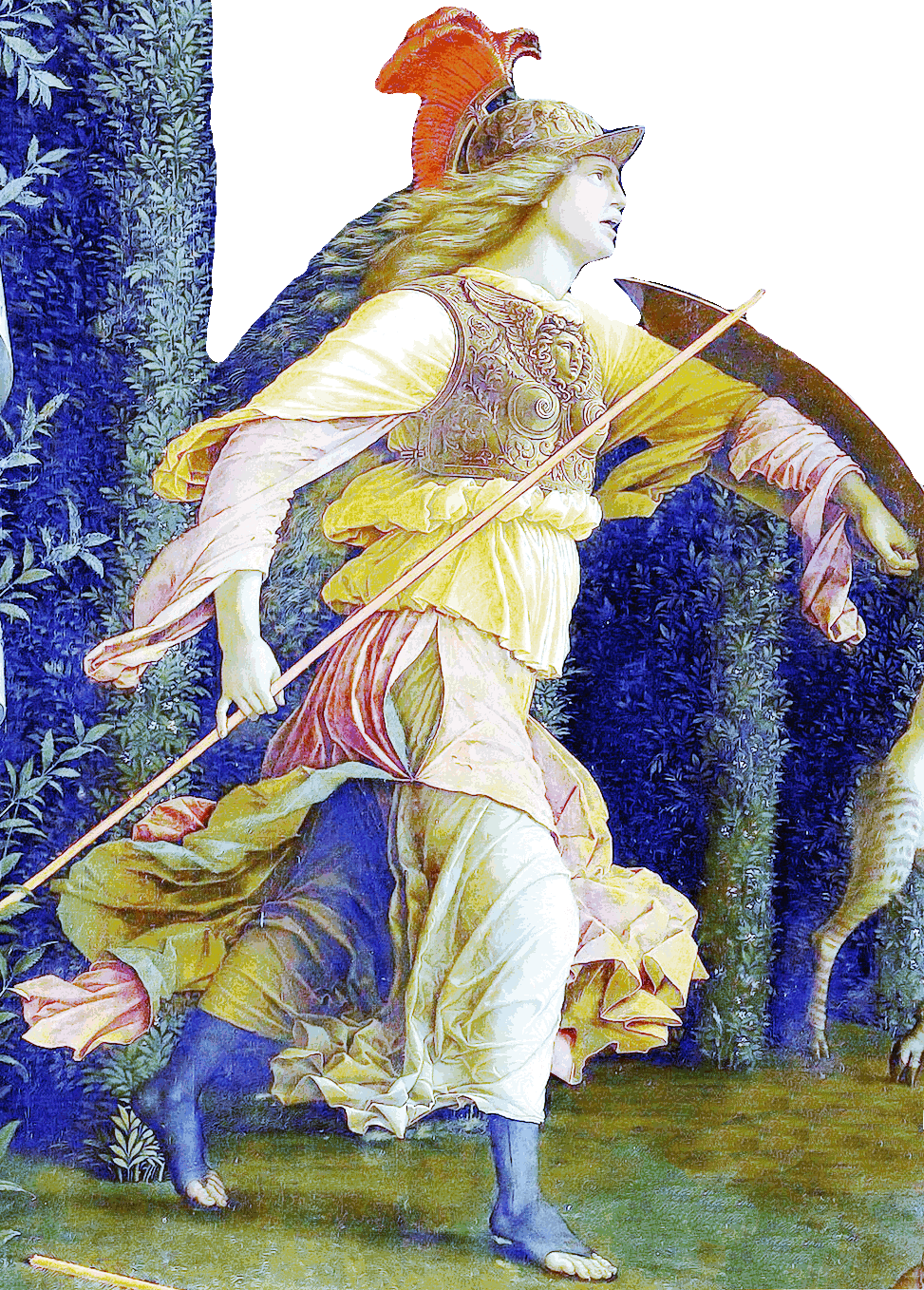
Wisdom |
-
The painting is an allegory, with the heroine Minerva, the goddess of wisdom, leading the charge to restore virtue to the garden.
- Minerva is a virgin goddess who was called Athena by the
Greeks.
- Her domain includes music, poetry, medicine, wisdom, commerce, weaving, and the crafts.
-
Minerva is intertwined with nature, symbolizing virtue and her hair appears to blend seamlessly with the surrounding foliage, emphasizing a harmonious relationship with the natural world.
|
Roman Goddess: In Roman mythology, Minerva is the goddess of wisdom, strategic warfare, and crafts, corresponding to the Greek goddess Athena. She is also associated with justice, law, and victory. (Assistant)
|
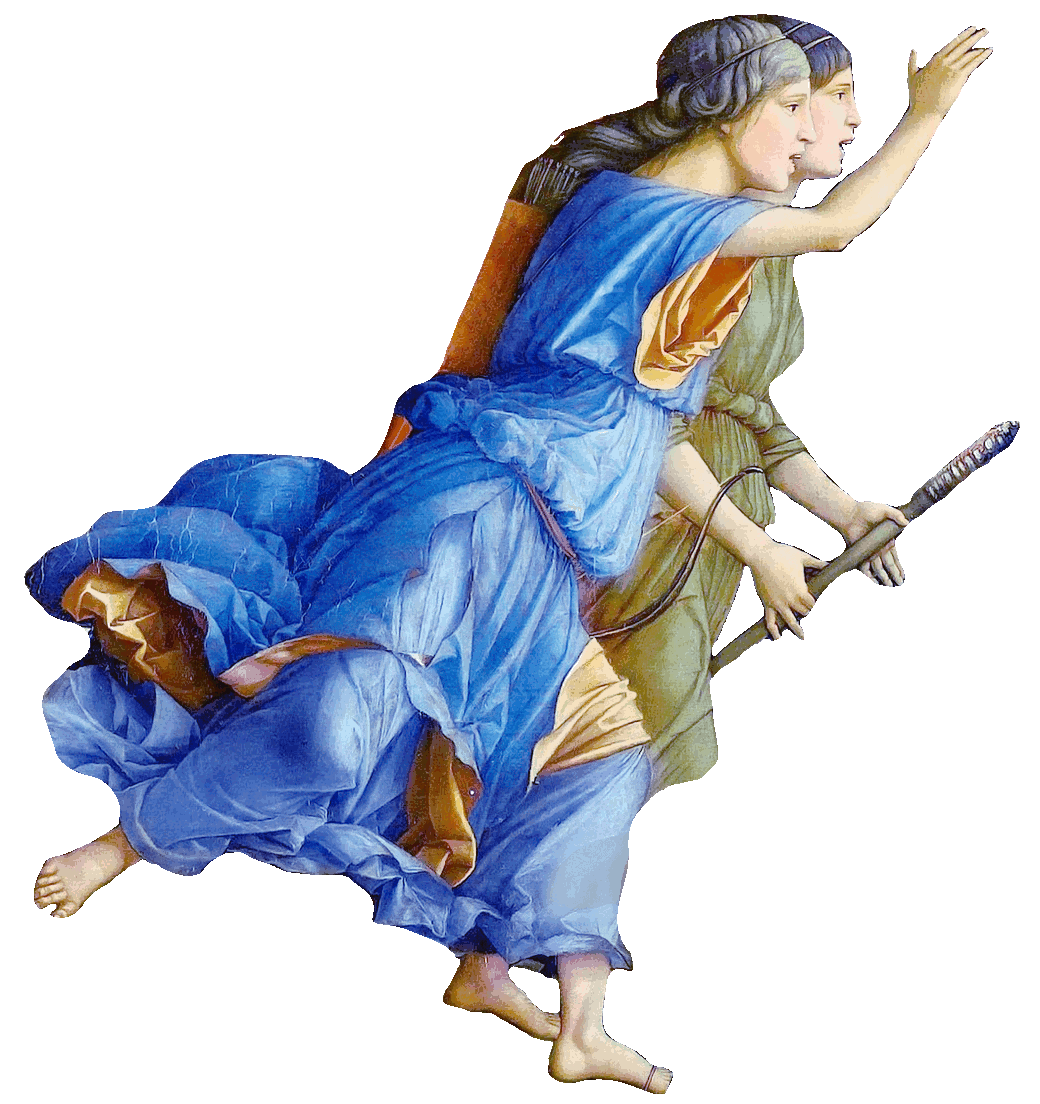
Huntress |
- In Greek mythology, the most prominent huntress is Artemis, the goddess of the hunt, wilderness, wild animals, and childbirth.
- She is often depicted with a bow and arrows, accompanied by hunting dogs or stags
and the Romans called her Diana.
-
In Roman mythology, Diana is the goddess of the hunt, wilderness, and the moon.
- Atalanta, in Greek mythology,
was a renowned and swift-footed huntress, probably a parallel and less important form of the goddess Artemis.
|
Atalanta was a human huntress whose name derives from the Greek 'atalantos' which means 'equal in weight.' She swore an oath of virginity to Artemis to prove her devotion, and these two themes, virginity and hunting, dominate most myths about her. Atalanta shows up across Greek mythology, and whether wrestling and defeating male heroes like Peleus or riding on the Argo with Jason and the Argonauts. (hellenic.org.au)
|
|
Virtues |
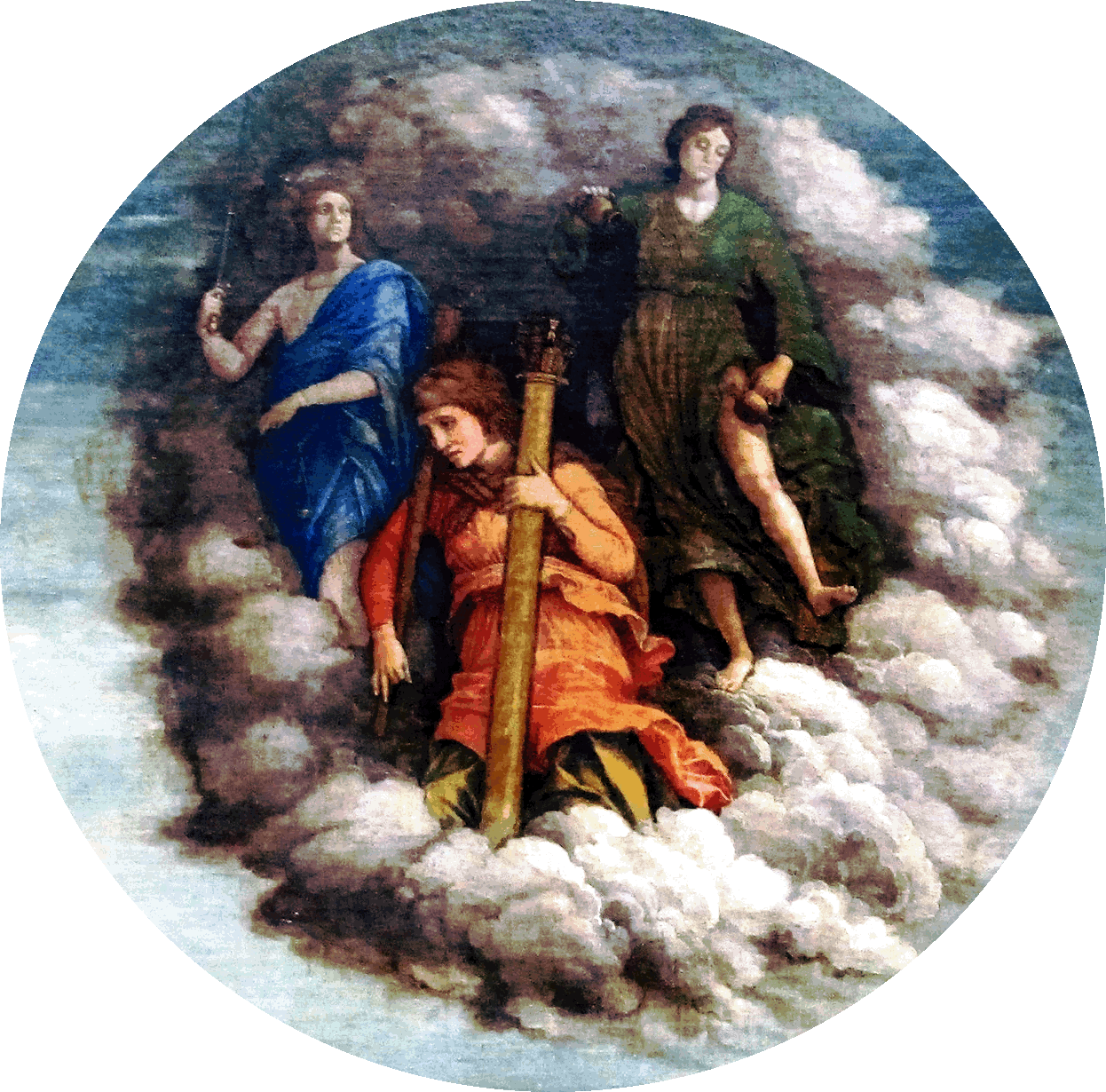
Justice, Temperance
and Fortitude |
- High in the sky are the three primary moral virtues required to perfect the appetitive powers: Justice, Temperance and Fortitude.
- These ladies are three of the four Cardinal Virtues and have
been chased out of the garden.
- Fortitude
is shown in orange/red, holding a club, column, and the lion of
Hercules.
- Justice is wearing blue, brandishing a sword and a balance scale.
- Temperance in green, pouring liquid between two pitchers to symbolize restraint.
|
It appears that the Mother of the Virtues is calling out to her daughters - Pallas, Fortitude, Justice, and Temperance - to rescue her from her prison and to rid her garden of all vices.
((wtfarthistory.com)
|
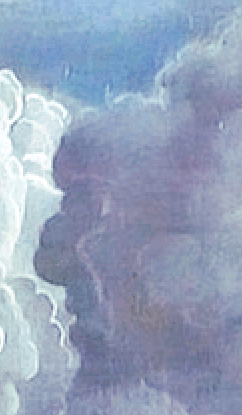
Homeless virtue
|
- Three virtues, Faith, Hope, and Charity, are seen in the sky, having been previously driven out
of the garden by the wicked vices.
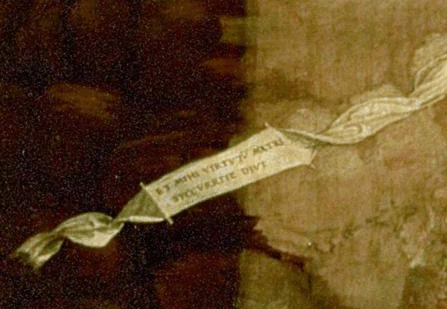
Gods, save me too, the Mother of the Virtues |
- Besides driving out the vices, another goal of Minerva's is to rescue the 'Mother of the Virtues' from her stone prison to the far right of the painting, a detail
that shows that is by far her most important task.
- The fourth virtue is Prudence and it has been argued that Pallas herself represents this virtue in the painting.
|
Thus Pallas, the goddess of wisdom, and the Mother of the Virtues flank the two sides of the painting. Pretty clear so far? ET MIHI MATER VIRTUTUM SUCCURRITE DIVI. (wtfarthistory.com)
|
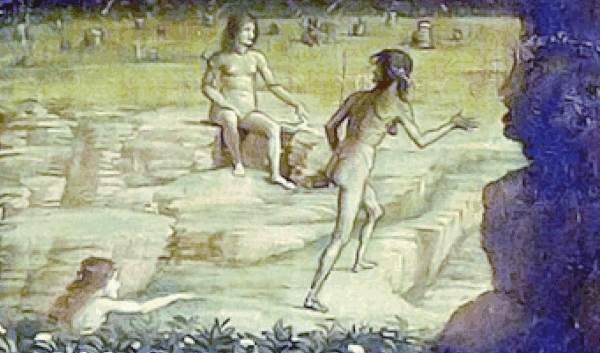
Prudence
sitting on right is dismayed |
- The Mother of Virtues, Prudence, is hidden within a structure on the right, her presence
shows her shock and dismay at the scene before her.
- Prudence, is walled up inside the stone structure and only a white fluttering banner reflects her cry of help.
- In Roman mythology, Prudentia is not a goddess, but rather the personification of the virtue of prudence, which embodies wisdom, foresight, and self-control.
- She is often depicted alongside Justitia, the goddess of
Justice, and is associated with attributes like a mirror and a
snake.
|
While not a deity with a rich mythology, Prudentia is an important moral and philosophical concept in Roman thought. (Assistant)
|
|
Vices |
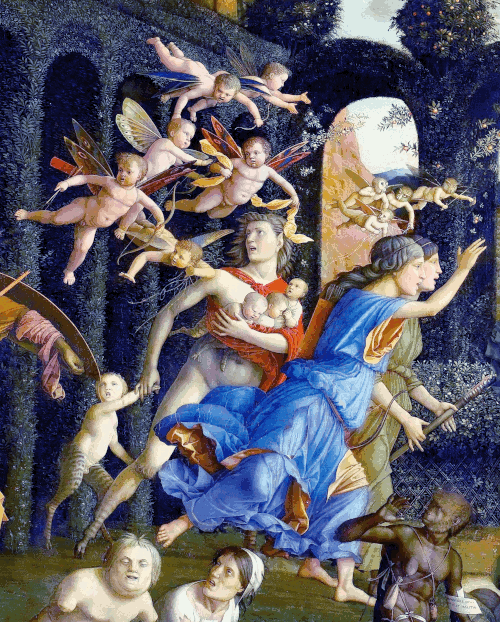
Multiple vices flee |
- The painting depicts the triumph of virtue over vice, with Minerva (Pallas Athena) driving out monstrous figures representing vices.
-
She is shown with a spear in one hand, rushing toward the various
characters as they fear for their life.
- Minerva was doing this in order to reestablish the rule of virtue and reclaiming it.
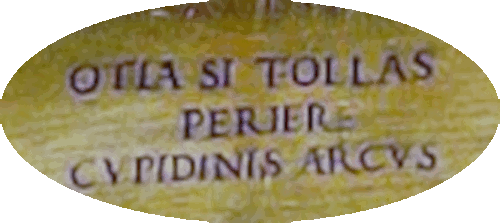
Eliminate idle
leisure |
- Cupid’s arrows inflict instant infatuation, lust, and sensations of love on anyone they touch, even with the slightest prick of a finger.
- Mantegna is communicating the idea that idle leisure
leads to the damaging consequences of a love spell.
|
Inscribed on the landing above the water, beneath Pallas’ right foot, is another phrase that helps us unlock further details in the painting. It declares:
OTIUM SI TOLLAS PERIERE CUPDINIS ARCUS
Eliminate idle leisure and Cupid’s bow is broken. (wtfarthistory.com)
|
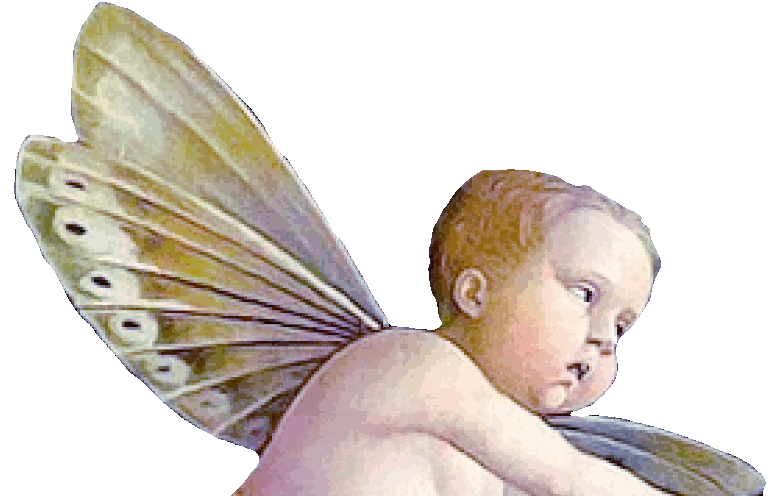
Cupid |
- For this reason, several cupids with butterfly wings
scatter as Minerva emerges from the garden’s pergola arch.
- To emphasize the notion that Cupid’s arrows can lead to
lasciviousness, Mantegna juxtaposes a satyr family beneath the
mischievous Cupids.
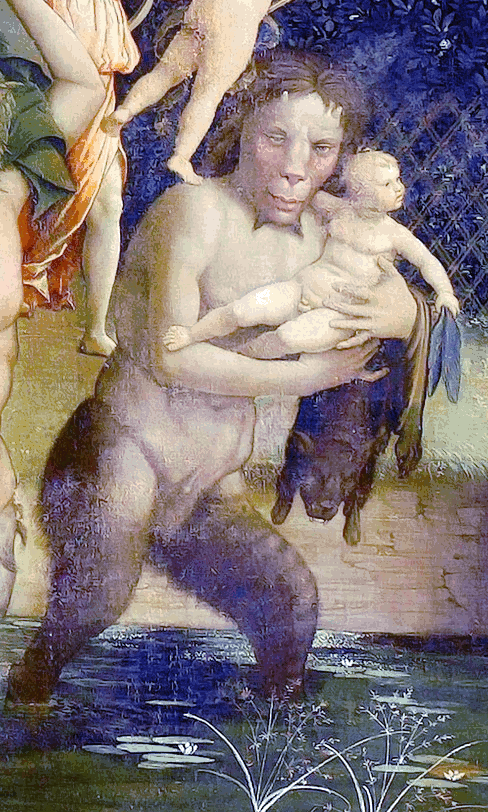
Grotesque
Satyr |
- Satyrs represent lust and all forms of illicit sexual behaviors.
-
Depicted as a monstrous faun/satyr who carries off an infant, or as one scholar argued, an un-winged Cupid.
- The vices are depicted as grotesque and monstrous
figures, hideously disfigured.
- These vices are of an immoral or wicked personal behavior or characteristic, and those figures portray that characteristic
throughout the painting.
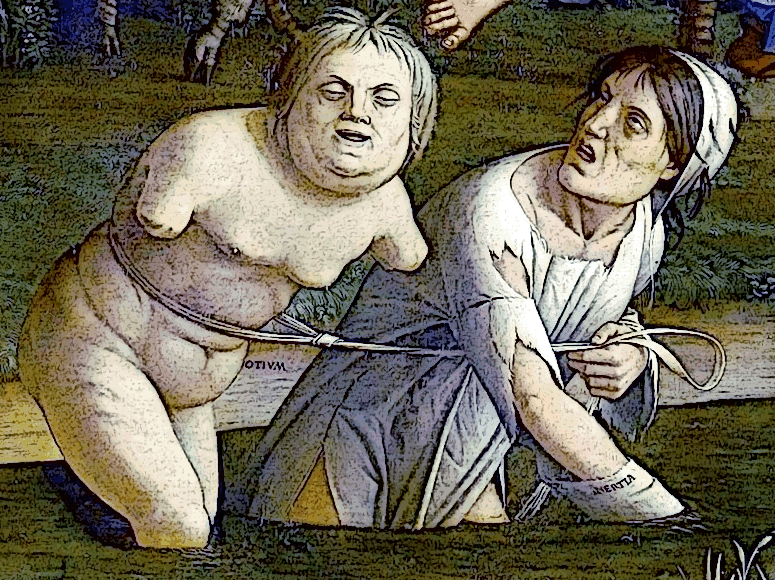
Otium and
Inertia |
- In the water next to the inscription is the personification of idleness, the woman hunched over without any arms, identified with
as Otium.
- She appears to mock the armless Venus.
- Leading idleness around is another creepy woman
and her name is Inertia.
|
"Otium" is a Latin term that refers to a state of leisure, free time, or rest, often associated with intellectual pursuits and personal development. It's a concept valued in Roman culture, contrasting with "negotium," which represents business or activity. Otium is not merely idleness but a period of time dedicated to activities that are fulfilling and contribute to one's well-being and personal growth. (Assistant)
|
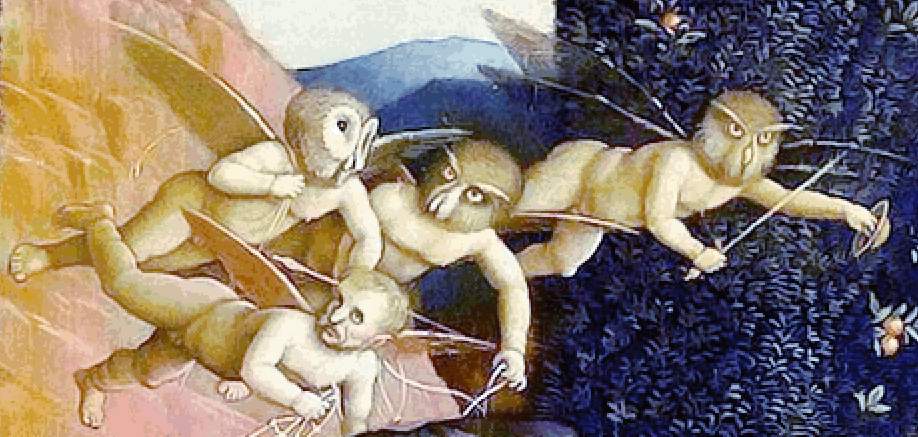
Owl-like cupids |
- Owl-faced cupids are hovering above and represent genii or supernatural guardian figures.
-
Barn Owls are known for their heart-shaped facial disc, which is a collection of feathers that help them funnel sound to their ears, making them exceptional hunters.
- In the context of the painting, an owl generally accompanies Pallas and is a symbol of wisdom, but combined with a cupid’s wings and body they likely represent a vice.
|
The owl with a heart-shaped face is sometimes used in Valentine's Day decorations or artwork as a playful and slightly unconventional symbol of love. (Assistant)
|
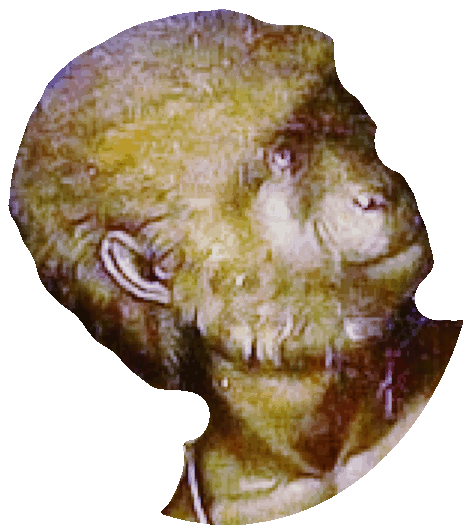
Humanlike
jealous monkey |
- That are even anthropomorphic monkeys, having human characteristics.
- A monkey that is also a hermaphrodite with asexual
features.
- Fraud and Malice with bags of false seeds.
|
One of the strangest creatures in the painting is the hermaphrodite monkey at the lower center in the water. Identified by a tiny ribbon across its abdomen as SUSPICIO, or jealousy, this rare figure carries several sacks that contain seeds of all things bad, worse, and the worst (SEMINA MALA, PEIORA, PESSIMA). In its hand is yet another banner that proclaims: IMORTALE ODIVM / FRAVS ET MALITIAE Eternal hatred, fraud, and malice What I’ve gleaned from this creature is that you don’t want to cross its path or all things bad will come to you. (wtfarthistory.com)
|
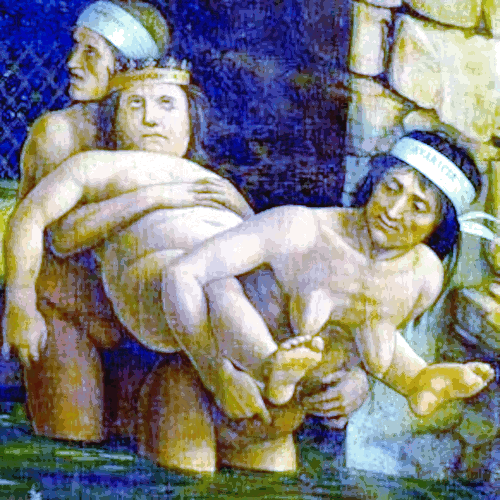
Ingratitude, Ignorance
and Avarice |
- The three Vices, Avarice, Ingratitude and Ignorance are
trying to sneak away with a fat drunkard,
- Each are named with inscriptions on bandannas or a crown,
from left to right they are ingratitude, ignorance, and avarice/greed.
- Avarice is
insatiable greed for riches; inordinate, miserly desire to gain and hoard wealth.
|
With this there grows
In my most ill-composed affection such
A stanchless avarice that, were I king,
I should cut off the nobles for their lands,
Desire his jewels and this other's house:
And my more-having would be as a sauce
To make me hunger more.
(Shakespeare, Macbeth)
|

Centaur
a hybrid creature |
- The centaur is often a symbol of bestial lust or brutality.
- On his back stands a rather seductive woman, whose golden bow might make her Aphrodite/Venus, the goddess of love.
- She has also been identified as Diana or to the Greeks,
Artemis by some art historians but that is not correct.
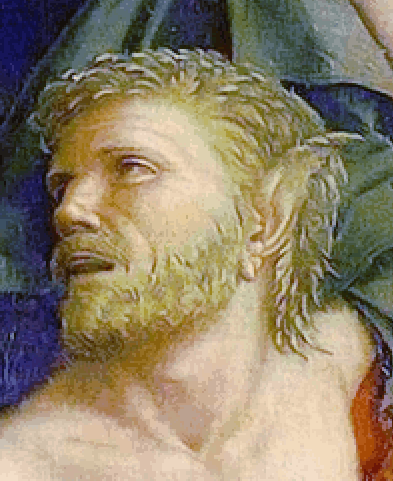
Centaur |
-
In Greek mythology, Centaurs were said to be the offspring of Ixion, a mortal king, and Nephele, a cloud nymph created by Zeus to deceive Ixion.
- This union resulted in the birth of the first Centaur, a
hybrid creature with the torso of a man and the body of a
horse.
-
Another tribe of centaurs was said to have lived on Cyprus
called the Cyprian Centaurs who were fathered by Zeus, who, in frustration after Aphrodite had eluded him, spilled his seed on the ground of that land.
- Unlike those of mainland Greece, the Cyprian centaurs were ox-horned.
|
In Roman mythology, centaurs are half-human, half-horse creatures known for their wild and often violent nature, particularly their fondness for wine and women. While generally portrayed as barbaric, the centaur Chiron stands out as a wise and benevolent figure, renowned for his knowledge of medicine and his role as a tutor to heroes. (Assistant)
|
|
Goddesses in
Trouble |
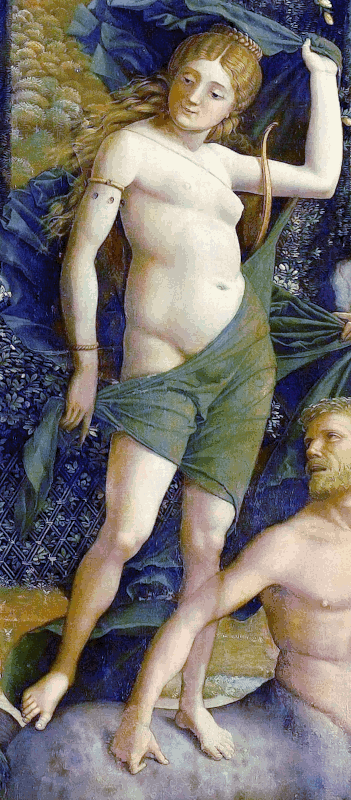
Venus
is Aphrodite |
- Idleness is chased by Minerva, who is also rescuing
Venus, goddess of love, from being raped by a Centaur, symbol of concupiscence.
- To the Greeks she was Aphrodite.
- Refer to artist
Edgar Degas (1834-1917) for a sketch called 'Venus after
Mantegna cil' that is identical to the figure in this
painting.
|
The story of Venus and the Centaurs involves a different situation. The centaurs, known for their wild nature, attempted to abduct and assault the Lapith women at the wedding of Pirithous and Hippodamia, not Venus specifically. This event, known as the Centauromachy, is a famous myth. In another instance, the centaur Nessus attempted to assault Deianira, Hercules' wife, while carrying her across a river. (Assistant)
|
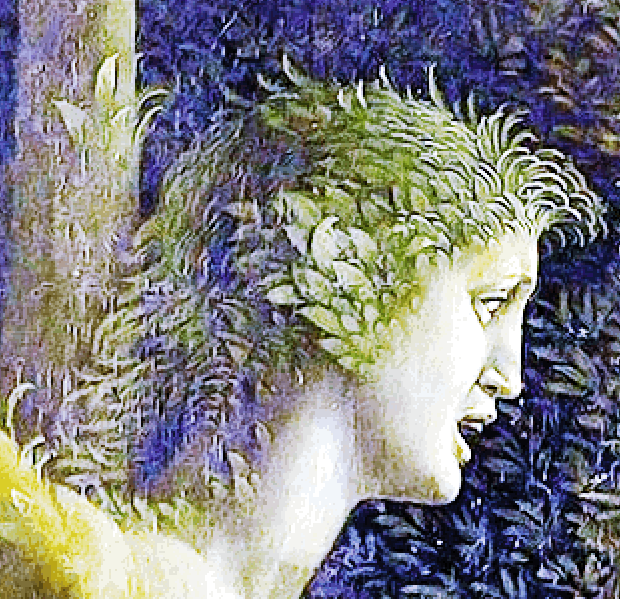
Daphne turned into a
tree |
- Among the myths of Ancient Greece, one of the most enduring stories about Apollo is related to a beautiful goddess called Daphne, who is symbolized by the Grecian laurel tree.
-
Daphne was the beautiful daughter of a river god (probably Ladon) who lived a pastoral existence in either Thessaly, the Peloponnese, or Syria.
- She rejected every lover, including Apollo.
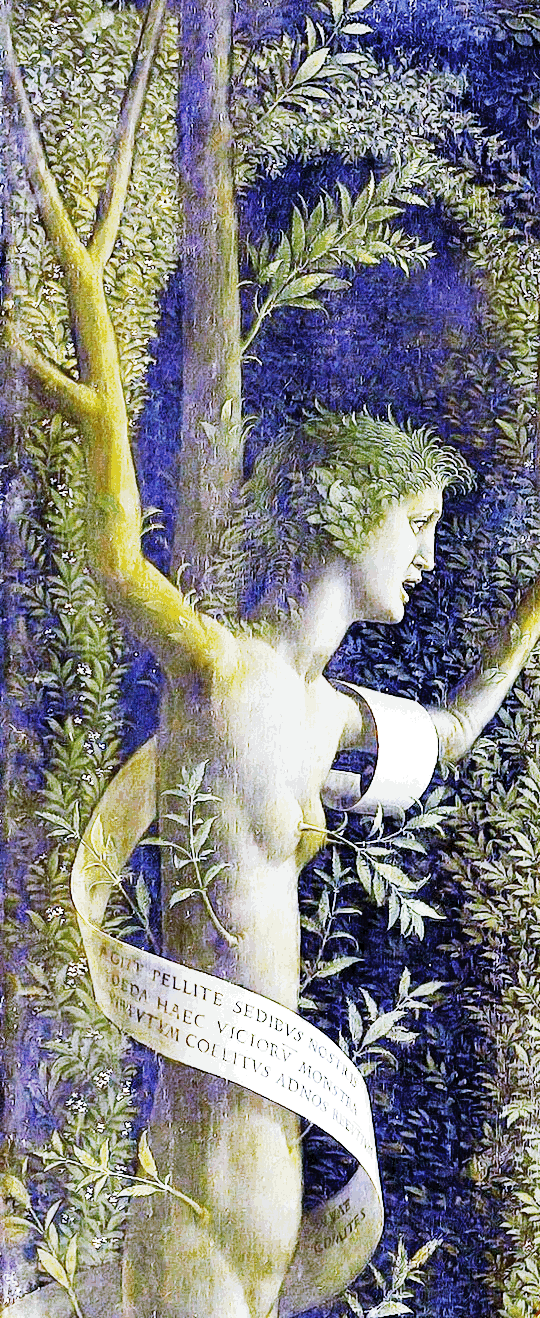
Daphne turned into a
tree |
- When Apollo pursued her, Daphne prayed to the Earth or to her father to rescue her, whereupon she was transformed into a laurel.
- Apollo created the laurel wreath for poets and, in Rome, for triumphs.
- Daphne was also loved by Leucippus, who was killed because of Apollo’s jealousy.
- The Grecian laurel is an aromatic evergreen tree, native to the Mediterranean region, as the humid and warm climate enables it to thrive.
|
In the story of Apollo and the Grecian laurel, the tree was once a beautiful goddess called Daphne, who was being pursued by Apollo. She asked her father for help, and her father turned her into a Grecian laurel tree when Apollo caught her. Because of his great love, Apollo decided to use the tree's leaves to make a wreath. This became a tradition for Greeks to wear a Grecian laurel wreath, and has influenced many other western cultures afterwards. (Assistant)
|
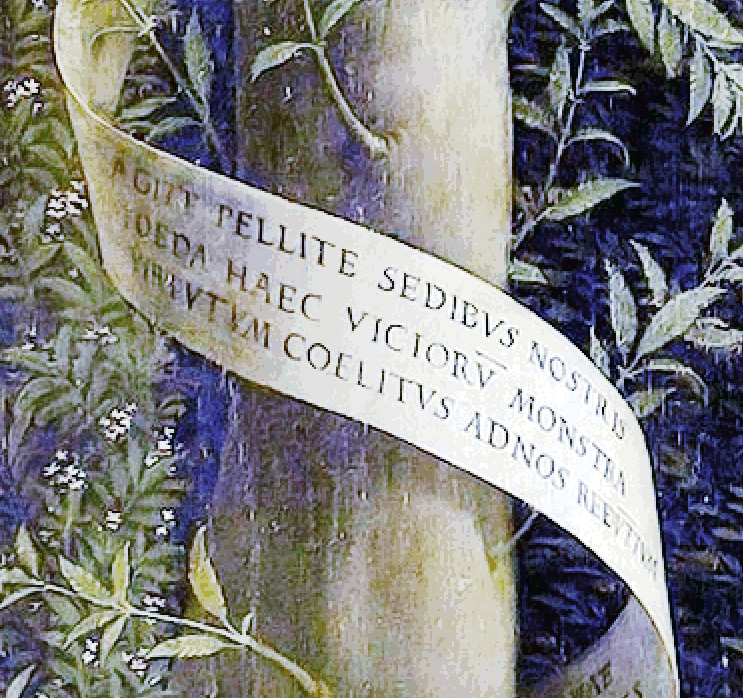
Medieval scrolls |
- Their are medieval scrolls that announce all the
characters such as with Daphne.
- Wrapped around the human-tree is banner that proclaims the same message in Latin and pseudo forms of Hebrew and Greek.
- Translated to; 'Come, divine companions of the Virtues who are returning to us from Heaven, expel these foul monsters of Vices from our seats.'
|
The text is as follows:
AGITE, PELLITE SEDIBUS NOSTRIS / FOEDA HAEC VICIORUM MONSTRA / VIRTUTUM COELITUS AD NOS REDEUNTIUM / DIVAE COMITES. (wtfarthistory.com)
|
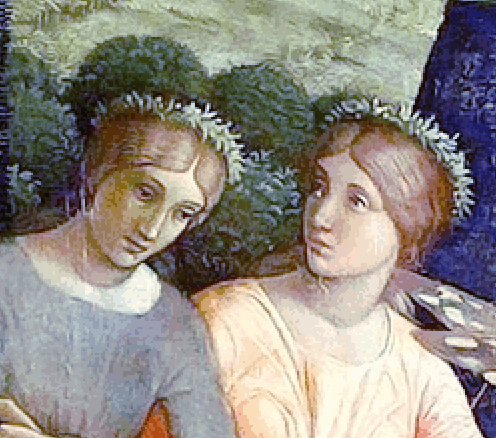
Women of Antiquity |
- Mantegna integrated elements of classical antiquity into his works, including the symbolic use of laurel wreaths.
- Specifically, Mantegna's Exemplary Women of Antiquity series (1495-1500) features several female figures from classical antiquity who are associated with the symbolism of the laurel wreath.
|
Exemplary Women of Antiquity is a set of paintings produced between 1495 and 1500 by Andrea Mantegna. They show the Carthaginian noblewoman Sophonisba poisoning herself to avoid being paraded in a Roman triumph, the Roman Vestal Virgin Tuccia proving her chastity by carrying water in a sieve, Judith with the head of Holofernes and Dido holding Sychaeus's funeral urn. (Wikipedia)
|
|
Conclusion |
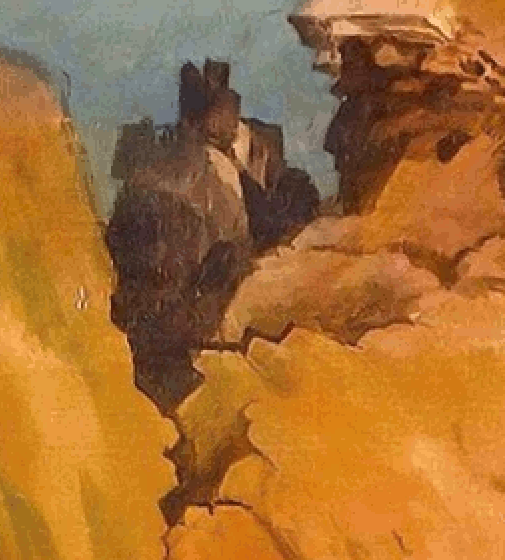
Man in black |
- As you study the triumph of the virtues, it is evident that vices can never prevail over virtues if there is a willingness to expel them.
- The vices are seen being chased from the garden.
- Traditional art has frequently delivered moral guidance
and religion dominated art for many centuries, partly because these institutions
were the richest establishments in Europe.
- This allowed them to call on the services of the finest artists
of that era.

Garden arches |
- Mineva, goddess of wisdom and war stormed. into a swampy garden to drive out the Vices
and succeeded.
- Sloth, greed, lust, and other grotesque figures
are shown escaping from the garden.
|
|

